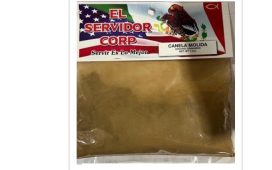The American Academy of Dermatology’s 2018 Annual Meeting
The annual meeting of the American Academy of Dermatology was held from Feb. 16 to 20 in San Diego and attracted more than 15,000 participants from around the world, including clinicians, academicians, allied health professionals, and others interested in dermatology. The conference highlighted recent advances in the diagnosis and management of dermatological conditions.
During one presentation, Jeanette Jacknin, M.D., a board-certified dermatologist based in Encinitas, Calif., discussed how the skin’s endocannabinoid system helps to regulate cellular proliferation, differentiation, and cell death. She also addressed how the imbalance of this system may be responsible for the flares of chronic skin conditions, and how the development of targeted cannabinoid therapies may help to control them.
“Human tissues have at least two types of cannabinoid receptors: CB1 and CB2. The body makes its own molecules, or endogenous cannabinoids, for these endocannabinoid receptors, and examples include the molecule anandamide, which was discovered in 1992,” Jacknin said. “The CB1 receptors are usually the ones involved with tetrahydrocannabinol euphoria, and the CB2 receptors are usually involved with the medicinal qualities. CB1 receptors are found mainly in the brain, but are also found in the skin, whereas CB2 receptors are mainly found in the skin, other organs, and immune cells, and they respond to cannabidiol and many other cannabinoids. These non-psychoactive cannabinoids are where the anti-inflammatory, pain relieving properties of cannabis reside.”
According to Jacknin, there are now about 130 cannabinoids that have been discovered, including cannabidiol, which is the predominant cannabinoid being investigated.
“The key conclusion is that cannabidiol from hemp or marijuana is anti-inflammatory. It acts on CB1 and CB2 receptors we have in many parts of our skin and body as part of a huge endocannabinoid network which affects the nervous and immune systems,” Jacknin added. “Although research has been limited so far, there are two studies in anti-aging, three in acne, two in itch, six in eczema, and six in psoriasis in the medical literature pointing to topical cannabinoids being helpful with the signs and symptoms of each of these conditions.”
During another presentation, Lorraine Rosamilia, M.D., of the Geisinger Health System in State College, Pa., outlined several case examples of shingles and the nuances of diagnosis, treatment, and prevention. The bulk of new information covered during the presentation addressed shingles vaccination.
“In 2006, the first shingles vaccine was developed, a live attenuated 1-dose subcutaneous injection with resultant prevention of shingles (38 to 70 percent effective, waning with age), prevention of post-herpetic neuralgia (67 percent effective), and reduction in duration and severity of the eruption in the event that a vaccinated person does get shingles anyway,” Rosamilia said.
According to Rosamilia, a newer vaccine approved in late 2017 is a non-live, recombinant subunit intramuscular 2-dose regimen, touting greater efficacy (over 90 percent effective in prevention of shingles for all age groups) but perhaps a higher short-term side effect severity (pain at injection site, flu-like symptoms) given the 2-dose intramuscular regimen versus the prior 1-dose subcutaneous one.
“Currently, the U.S. Centers for Disease Control and Prevention’s subgroup that dictates immunization practices is favoring the newer vaccine for widespread use in patients 50 and over, while the prior vaccine still is approved for those 60 and over,” Rosamilia said. “Moreover, the newer non-live vaccine may have much more applicability to immunosuppressed populations who could not receive the original live vaccine.”
Anne Chapas, M.D., a dermatologist in private practice in New York City, discussed the risk of complications associated with cosmetic treatment administration by unqualified providers. Currently, the number of patients seeking dermatology care after experiencing complications from cosmetic procedures performed by unqualified providers is increasing.
“To perform effective cosmetic procedures, you need to understand the biology of the skin,” Chapas said in a statement. “Board-certified dermatologists spend many years of education and training developing expertise in this area, and we build on that knowledge base throughout our years in practice.”
The most common adverse events tied to cosmetic procedures performed by unqualified provides include bruising, changes in skin pigmentation, burns, infection, scars, swelling, and even disfigurement. Chapas noted during the presentation that patients should make sure that providers are board certified and look for “F.A.A.D.” after the doctor’s name, which demonstrates the provider is a fellow of the American Academy of Dermatology, all of whom are board certified.
AAD: Ustekinumab Cuts Vascular Inflammation in Psoriasis
TUESDAY, Feb. 20, 2018 (HealthDay News) — Ustekinumab improves psoriasis and reduces vascular inflammation among patients with moderate-to-severe psoriasis, according to a study presented at the annual meeting of the American Academy of Dermatology, held from Feb. 16 to 20 in San Diego.
AAD: Fathers May Not Perceive Harms of Teen Indoor Tanning
TUESDAY, Feb. 20, 2018 (HealthDay News) — Specific populations, including fathers, more often perceive low harms of adolescent indoor tanning, according to a study presented at the annual meeting of the American Academy of Dermatology, held from Feb. 16 to 20 in San Diego.
Copyright © 2018 HealthDay. All rights reserved.







